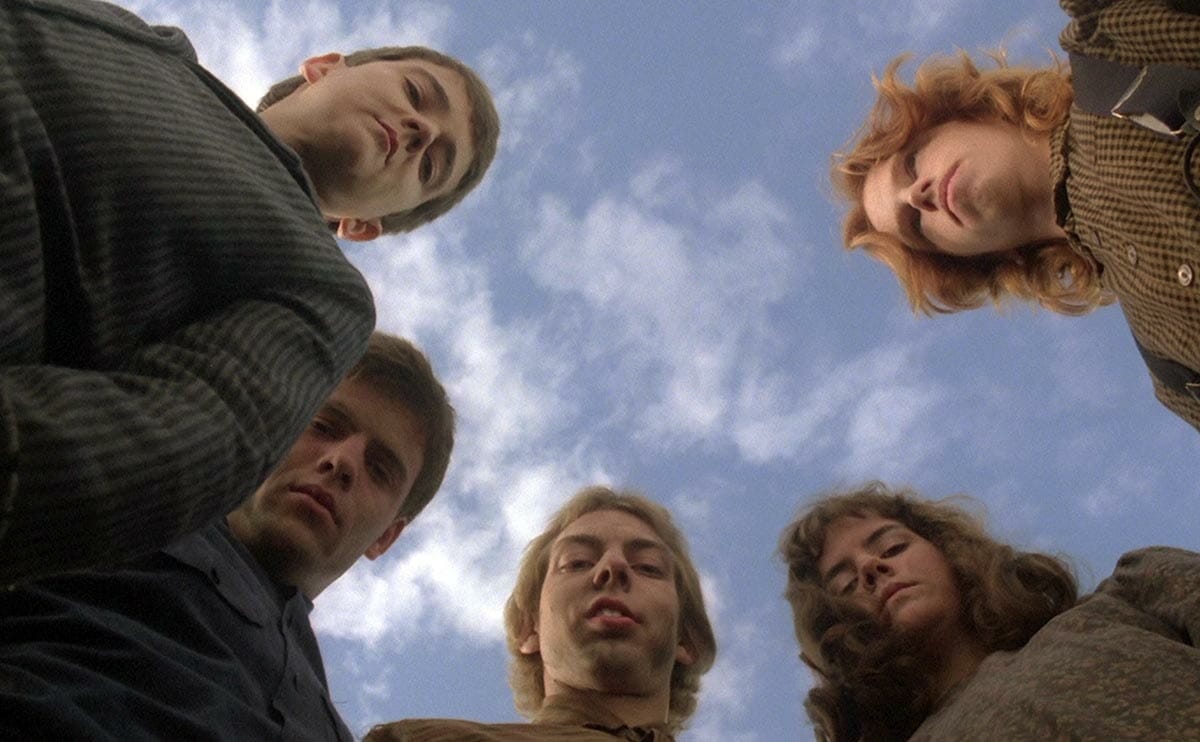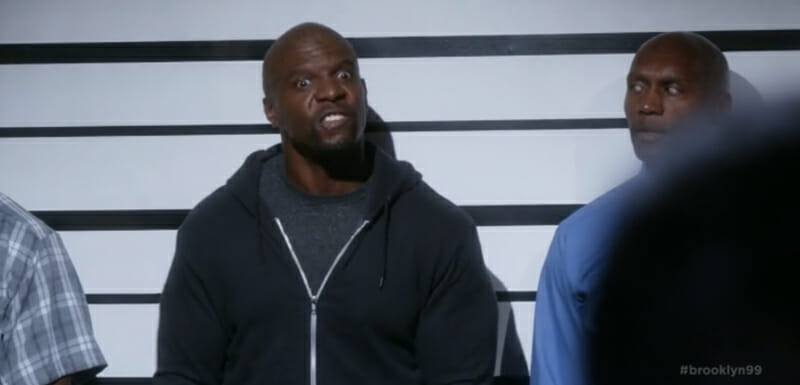On the making of "Children of the Corn" and why rural horror works.

It’s the 1980s in Los Angeles, and Fritz Kiersch is enjoying a successful career making commercials when a colleague at a film production studio asks if he’d like to make a movie based off a script written by Stephen King.
Kiersch and his partner take a meeting with the studio on a Thursday that lasts all of 45 minutes, after which they are offered the gig. They go downstairs to a burger joint for a bite and beer to discuss their futures and decide to take the plunge.
“We thought, ‘This is the way Hollywood works!’,” says Kiersch. “You talk to people for 45 minutes and they give you an opportunity to make a film.”
By Monday they’re flying to Iowa to scout locations. And that’s how Fritz Kiersch, who was not especially a fan of horror or Stephen King, became the director of “Children of the Corn.”
“Children of the Corn” is maybe the most iconic of rural horror movies. Based off the King short story of the same name, it tells the tale of a bunch of crazed children in a Nebraska corn town who rise up and kill all the adults under the direction of a child preacher named Isaac. They worship an evil Corn God called He Who Walks Behind the Rows. Misfortune, of course, befalls an out-of-town couple on a road trip who wind up in their midst. Released in 1984, the film took in over $14 million at the box office. Sequels to the movie are still being made. There are seven so far.
Kiersch lays out the impetus for the project in unromantic terms: They were trying to make a commercial product for the greatest revenue return. He was also trying to make a B movie. The Stephen King script was originally snapped up by Hal Roach Studios (Roach being best known for producing “The Little Rascals”) who then split the production costs with New World Pictures, a rebooted version of a company started by B movie king, Roger Corman. “It was not huge Academy Award dramatic moments,” says Kiersch. “It was more honoring the style of those films that preceded it.”
Kiersch grew up in Ithaca in upstate New York, in the “last house in town” looking out at the fields and farms.
“It’s the things around us that we take for granted. The common, the ordinary,” Kiersch says. “It’s as you walk down the street or a country lane or you’re out in the woods alone, it’s the things that we’re not seeing that creates our fear.”
Kiersch was charged, however, with not just making the countryside terrifying, but with the unique task of making corn scary.
“I didn’t know much about corn other than running around upstate New York, which is more of a wheat producer,” he says, “but the corn fields I was in [they] showed me that you couldn’t see. You lost your visibility. And when I went to Iowa and Kansas and really stood in the fields, I realized, ‘These things need to come alive.’”
The corn does indeed come alive and attack the protagonists of the movie, Vicky (played by Linda Hamilton, who also starred in “The Terminator” that year) and Burt, ensnaring Burt like an boa constrictor. But even before that, the couple grows frantic when they find themselves lost among the rows.
[mf_mosaic_container columns=”2″ captions=”yes”]
[mf_mosaic_item src=”https://modernfarmer.com/wp-content/uploads/2013/10/vickyandburt.jpg” number=”1″ caption=”Protagonists Vicky and Burt in better times, before all hell (and corn) lets loose.”]
[mf_mosaic_item src=”https://modernfarmer.com/wp-content/uploads/2013/10/childrenofcorn.jpg” number=”2″ caption=”Malachai, center, was good at cutting things up with a scythe, and not just corn. “]
[mf_mosaic_item src=”https://modernfarmer.com/wp-content/uploads/2013/10/isaac.jpg” number=”3″ caption=”Isaac, the leader of the killer kids, sporting old-world style.”]
[mf_mosaic_item src=”https://modernfarmer.com/wp-content/uploads/2013/10/corncross.jpg” number=”4″ caption=”Vicky is strung up on the corn cross, intended as an offering to He Who Walks Behind the Rows.”]
[/mf_mosaic_container]
“I tried editorially to create this kind of rushing montage of the corn getting bigger, closer and more aggressive,” says Kiersch.
There is a menacing Corn God that in the story that is ill defined, other than being large. In the movie it is an unseen creature burrowing furiously through the earth. That effect was cobbled together with ingenuity and agrarian tools.
“We dug a ditch and made a track and turned a wheel barrow upside down and dragged the wheel barrow with a cable tied to a tractor,” says Kiersch. “So kind of like a roller coaster car, it followed the track and went up and down the hills and valleys of the track, pushing dirt up and down as it went.” Kiersch wanted to create the fear that the monster was “everywhere,” even in the earth.
But ask anyone who saw the film as a kid what kept them up at night and they’ll probably tell you it was the psychotic, murderous children, particularly Isaac, who wore a sort of pseudo Amish outfit, and his redheaded henchmen Malachi, who was not shy about dispatching naysayers with a scythe. Kiersch said they inflated agrarian stereotypes of extreme self-sufficiency to make the children, adrift of any adult authority, as creepy as possible.
‘It’s as you walk down the street or a country lane or you’re out in the woods alone, it’s the things that we’re not seeing that creates our fear.’
“Their hair is shaggy because they cut their own hair, they make their own clothes, they become survivalists,” says Kiersch.
It’s the fantasy of being a child living without adults that Kiersch surmises has people coming back to the tale generations later. Of course, his version is more “Lord of the Flies” than “Home Alone.” He intended the movie to be a kind of cautionary tale about the danger of dogma, although over the years he has been dismayed to find that many young people misinterpreted the message.
“The letters I got were, for example, written in red ink in a long spiraling sentence from the center of the page to the outside of the page, asking me for something,” says Kiersch. “Telling me that they believed what I believe, which is to do evil to people. I mean, letters that when you read them, you don’t want to hold them, you drop them. They’re spooky.”
But that doesn’t mean that Kiersch, who is now the head of Oklahoma City University’s Moving Image Arts Program, has forsaken the film. “I’d like to make the 10th and last and close it and be the last cycle in this franchise,” he says.
Asked what he’d do differently today, Kiersch says that, despite the leaps in special effects technology, he probably wouldn’t make a computer generated Corn God. “Once you see the monster, you know what you’re up against, and that’s not as scary,” he says. No, a lot of the monster would be in the audio. “The enhancement in sound work,” he says, making a wistful sound, “Ah! Fantastic.”
Also, “I think the woman would be the hero now.”
[mf_h5 align=”left” transform=”uppercase”]Your Rural Horror Required Viewing Guide[/mf_h5]
[mf_editorial_break layout=”twocol”]
Rural horror does not stop and start in a Nebraska cornfield. For suggestions of scary, ag-themed films we went to the experts at Fangoria magazine. Rebekah McKendry is the magazine’s director of marketing, and a film historian and writer. She also grew up in rural Virginia, where her family owned a sheep farm.
So what’s so scary about the country?
“Isolation is definitely one of the first things,” says McKendry. “The idea that there’s nothing surrounding you, that there’s no help, that there’s no safety, no buildings to hide yourself in. I would also say the rural inhabitant becomes an icon in a lot of horror movies. People are unsure of folks who live in backwoods or farmers because they themselves seem isolated from modern technology and the various things that we’ve come to be accustomed to.”
Being from the country, McKendry does find some of the tropes tiresome.
“I get so sick of seeing the redneck stereotype,” she says. (There is even a whole sub-genre called “Rednecksploitation”.) She would like to see the script flipped.
“I would love to see some horror films where the tables are reversed, where it’s in the woods and in these rural settings but the rural inhabitants aren’t the monsters in it,” she says. “Where they’re not necessarily the victims, but something that shows that farmland is not always something to be feared, that isolation is not always something to be feared.”
Below are some of her picks for classic rural horror films and genre-busters.[/mf_editorial_break]
[mf_h5 align=”left” transform=”uppercase”]Two Thousand Maniacs![/mf_h5]
“One of my favorite ones is ‘Two Thousand Maniacs!’ and this is from Herschell Gordan Lewis in 1964 and it essentially is about the ghostly inhabitants of this southern town that lure in Yankee visitors and then torture them. It’s totally campy and totally fun, it’s not meant to be taken seriously. They have a song that they sing throughout called ‘South’s Going to Rise Again.’ And it is absolutely a romp.”
[mf_video type=”youtube” id=”iBoM2hkDZLI”]
[mf_h5 align=”left” transform=”uppercase”]Night of the Scarecrow[/mf_h5]
“I’ve always been sacred of scarecrows, so the made-for-TV movie ‘Dark Night of the Scarecrow’ is great for that because it does have a scarecrow in it torturing people and coming to life.”
[mf_video type=”youtube” id=”gA1RYe__Svs”]
[mf_h5 align=”left” transform=”uppercase”]Black Sheep[/mf_h5]
“There’s one that came out of New Zealand called ‘Black Sheep’ which is about all these sheep on the rural New Zealand sheep farm all becoming zombies and attacking people and eating them. And it’s meant to be sort of tongue in cheek and hilarious.”
(We would also like to extend a hearty slow clap to the tagline, “Get Ready for the Violence of the Lambs.”)
[mf_video type=”youtube” id=”z4PkMPAlMFo”]
[mf_h5 align=”left” transform=”uppercase”]Grapes of Death (Les Raisins de la Mort!)[/mf_h5]
“There’s a french one called ‘Grapes of Death’ which is Jean Rollin. It’s kind of arty, it’s about the chemicals that they use on the grape farms in France turning people into zombies.”
[mf_video type=”youtube” id=”Lz9Ms4NCthM”]
[mf_h5 align=”left” transform=”uppercase”]Motel Hell[/mf_h5]
“‘Motel Hell’ is one of the most iconic ones. They’re on a meat farm and you find out that they’re putting more than just pigs and cows into their sausages.”
[mf_video type=”youtube” id=”k4AR3BgaCdA”]
[mf_h5 align=”left” transform=”uppercase”]Tucker and Dale Verses Evil[/mf_h5]
“There’s a really good one called ‘Tucker and Dale Versus Evil’ that completely breaks down the stereotype. It’s about a group of teens who travel through a woodsy area and at the same time these kind of farmery hunters are at a hunting cabin. And the kids think the hunters are trying to kill them, but the hunters think that the kids are trying to kill them. So it really breaks down the backwoodsy, redneck, cannibal sterotype. It’s hilarious.”
[mf_video type=”youtube” id=”l1t8OZn_uhE”]
[mf_h5 align=”left” transform=”uppercase”]BONUS: Farm Pop Roundup[/mf_h5]
Terry Crews as aesthete cop Sergeant Terry Jeffords is a highlight of the new Andy Samberg vehicle “Brooklyn Nine-Nine”. In episode three he’s invited to be part of a police lineup as his alter ego “Scary Terry” who says what “Regular Terry” is only thinking. What does Scary Terry have to say?
[mf_h4 align=”left” transform=”uppercase”]This is taking too long!!! I’m going to be late for the farmers’ market!!![/mf_h4]
“Nashville” returned this season with all kinds of new intrigue and cartoonishly evil characters, including reptilian label executive Jeff Fordham who steals Rayna James’ talent away from her newly minted label. Aside from the fact that the only thing missing from this character is a mustache to twirl, how do we know this guy is a jerk? His pitch to crooner Will “Welcome to Nashville Bitch” Lexington to come over to the dark side:
[mf_h4 align=”left” transform=”uppercase”]Rayna’s label is like the farm team, and I’m inviting you to the majors.[/mf_h4]
Farm team? RUDE.
And finally, Bansky released a new installation into the streets of New York called “Sirens of the Lambs” featuring distressed looking stuffed animals spilling out of a delivery truck.
[mf_video type=”vimeo” id=”76631729″]

